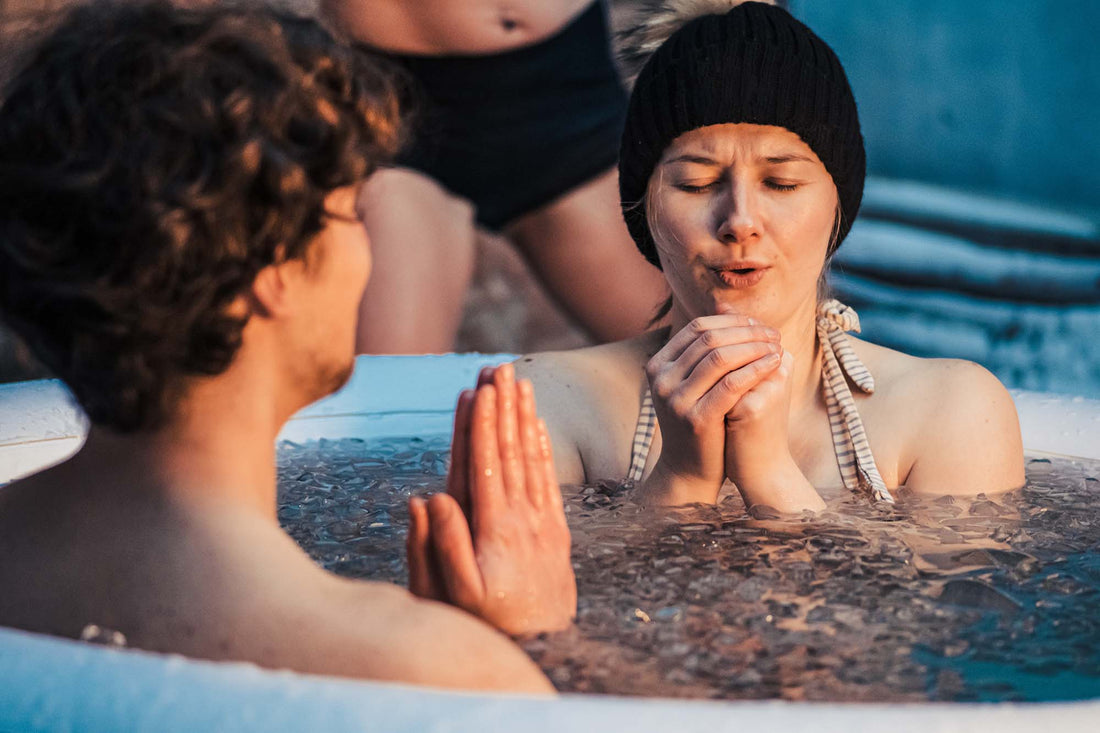What Are the Disadvantages of Cold Plunge?

Cold plunging has gained massive popularity due to its benefits, including improved circulation, reduced inflammation, and enhanced recovery. However, like any wellness practice, cold plunging also comes with potential disadvantages and risks that should be considered before making it a daily habit.
In this guide, we’ll explore the risks of cold plunging, who should avoid it, and how to safely practice cold plunging while minimizing potential dangers.
1. Risk of Hypothermia and Overexposure
Cold water immersion exposes your body to extreme temperatures, which can lead to hypothermia if done incorrectly. This is especially true if you stay submerged for too long or if the water temperature is too low.
Symptoms of Hypothermia:
- Uncontrollable or stopped shivering
- Confusion and sluggish thinking
- Numbness in hands, feet, and extremities
- Slow breathing and heart rate
How to Minimize Risk:
- Keep cold plunge sessions between 1–5 minutes
- Avoid water temperatures below 39°F (4°C) unless highly experienced
- Warm up gradually after exiting the plunge
2. Increased Stress on the Heart
Cold water shock causes an immediate spike in heart rate and blood pressure. For individuals with heart conditions or hypertension, sudden immersion can be dangerous and lead to cardiac strain.
Who Should Be Cautious?
- Individuals with high blood pressure
- Those with a history of heart disease or arrhythmias
- People taking medication that affects heart rate or circulation
How to Minimize Risk:
- Consult with a doctor before cold water immersion
- Avoid sudden full-body immersion—enter gradually
- Monitor how your body responds and stop if you feel lightheaded
3. Shock Response and Difficulty Breathing
Cold water triggers the cold shock response, which can make it difficult to breathe. This reaction causes involuntary gasping, hyperventilation and increased adrenaline release.
Risks of Cold Shock:
- Sudden hyperventilation can lead to panic or dizziness
- Increased breathing rate may cause lightheadedness
- Accidental inhalation of water if breathing is not controlled
How to Minimize Risk:
- Take slow, deep breaths before entering
- Ease in gradually instead of jumping in
- Focus on controlled breathing once submerged
4. Potential for Nerve and Tissue Damage
Prolonged exposure to extreme cold can lead to nerve damage, frostbite or tissue injury, especially in hands, feet and extremities.
Signs of Cold-Induced Nerve Damage:
- Numbness or tingling that persists after plunging
- Loss of sensation in fingers or toes
- Skin that turns pale or waxy-looking
How to Minimize Risk:
- Wear neoprene gloves and booties if plunging in freezing temperatures
- Keep sessions short and limit exposure time
- Warm up your extremities with gentle movement after exiting
5. Fatigue and Overuse Effects
Cold exposure stimulates the nervous system, which can be energizing in the short term but may lead to fatigue or burnout with excessive use.
Symptoms of Cold Plunge Overuse:
- Feeling constantly cold even when not plunging
- Difficulty warming up after sessions
- Increased fatigue or sluggishness
How to Minimize Risk:
- Avoid daily plunging if experiencing excessive fatigue
- Give your body time to recover between sessions
- Ensure proper nutrition and hydration to support recovery
6. Impact on Hormones and Metabolism
Frequent cold plunging affects metabolic function and hormone levels, especially if done excessively. Cold exposure can lead to increased cortisol (stress hormone) levels, which may negatively impact recovery and immune function.
Potential Side Effects:
- Disrupted sleep patterns
- Slower post-workout recovery
- Increased stress response over time
How to Minimize Risk:
- Listen to your body—reduce frequency if you feel run down
- Keep sessions brief (under 5 minutes) to avoid overloading stress hormones
- Monitor sleep and recovery to ensure proper balance
7. Not Suitable for Everyone
While cold plunging has benefits, it’s not ideal for everyone. Certain individuals should avoid cold immersion due to health risks.
Who Should Avoid Cold Plunging?
- Individuals with Raynaud’s Disease (sensitive circulation in fingers/toes)
- People with severe respiratory conditions (cold shock can restrict breathing)
- Those with nerve disorders or neuropathy (risk of injury due to lack of sensation)
- Individuals prone to severe anxiety or panic attacks (cold shock may trigger panic)
How to Minimize Risk:
- Consult a healthcare professional if you have pre-existing conditions
- Try gradual cold exposure before full immersion
- Listen to your body and adjust frequency as needed
How to Safely Practice Cold Plunging
If you want to continue cold plunging while avoiding risks, follow these best practices:
1. Keep Sessions Short and Controlled
- Beginners: 1–2 minutes
- Intermediate: 3–5 minutes
- Advanced: Up to 10 minutes (only for highly adapted individuals)
2. Use a Thermometer to Monitor Water Temperature
- Ideal range: 50°F to 59°F (10°C to 15°C)
- Extreme caution below 39°F (4°C)
3. Warm Up Gradually After Plunging
- Engage in light movement (jumping jacks, push-ups)
- Use layered clothing to retain heat
- Drink warm herbal tea or broth
4. Listen to Your Body
- If you feel lightheaded, extremely cold or fatigued, stop and adjust frequency
- Monitor how your sleep, energy, and recovery respond to cold exposure
Is Cold Plunging Worth the Risks?
For most people, cold plunging is safe and beneficial when done correctly. However, understanding the cold plunge risks helps ensure you practice cold water immersion safely.
✅ If you’re healthy, active, and adapt gradually, cold plunging can enhance recovery, mental resilience, and circulation.
❌ If you have heart conditions, circulation disorders, or are highly sensitive to cold, speak to a doctor before trying it.
By following safe cold plunging practices, you can enjoy its benefits while minimizing risks. Always prioritize controlled exposure, gradual adaptation and post-plunge recovery to make the most of your experience.
➡️ Want to dive deeper? Check out our other cold plunge blogs for expert tips!
Disclaimer: Cold plunging affects the cardiovascular and nervous systems. If you have heart disease, circulatory conditions, or any medical concerns, consult a healthcare professional before starting. Always listen to your body and practice cold exposure responsibly.

